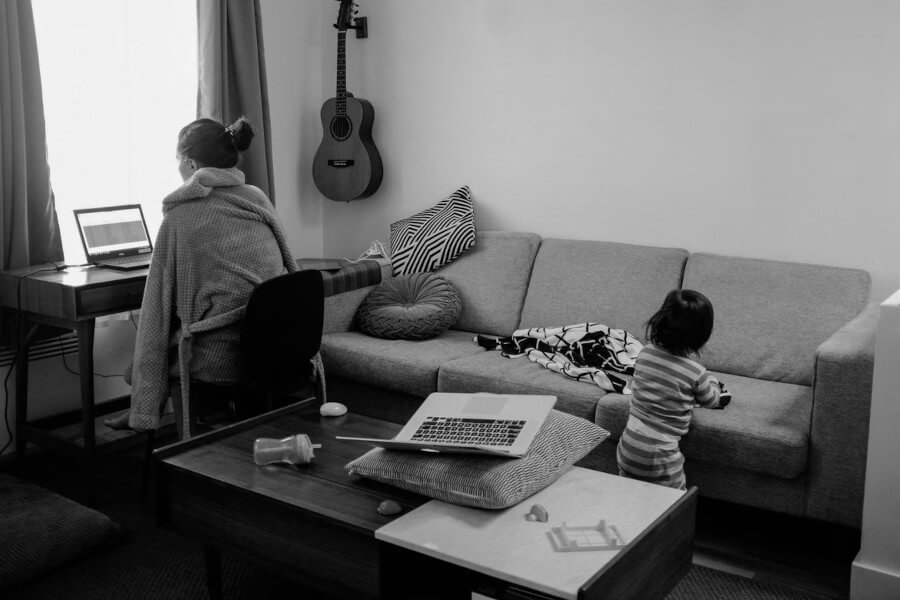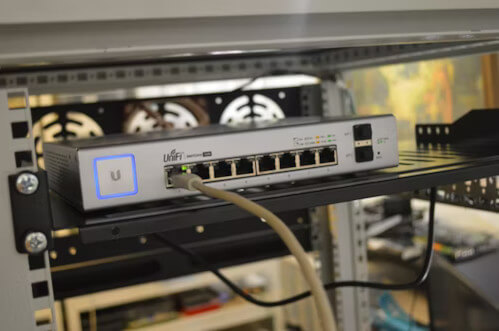Home Work Space

More people have the opportunity to work from home compared to a generation ago. What was at one time at odds with what employers would even consider, has gone mainstream.
50 years ago, working from home was restricted primarily to studying. But as technology has evolved, companies found they could motivate or retain employees by offering work-from-home options. They issued laptops, developed online meeting systems, devised ways to remotely share data and systems, and learned how to monitor productivity. Teleworking was generally offered to the prized (and better-remunerated) employees. And those employees could afford to invest in their residences, installing the required technology to work remotely.
This transition, as with all societal changes, was gaining momentum when the pandemic hit. Within weeks, many companies found themselves unable to operate unless they permitted remote work. But unlike the pioneers, this new wave was forced to make do with what they could cobble together. For their employees it meant double- or triple- use of space, sharing computers and bandwidth, and adjusting their family dynamics.
All crises end. Today, employees are returning to their desks. And yet, the specter of lockdowns looms. Companies, burnt once, have recognized that regardless of wanting people at their desks, remote working needs to remain part of the mix.

Likewise, many employees have recognized that they need to be prepared and are re-thinking their living space to also support a remote working environment.
The Changing Criteria of What We Want in a Home

Growing up, most of us dreamed of what our future home would offer: master bedroom, rooms for the kids, living room, kitchen; we might have spiced it up with a garden, deck, a bbq; it would have great views and amenities, good neighbors, perhaps a den. Likely only a few envisioned a study.
But working from home changes has changed our calculus. With little disposable income, rooms have had to double up. Sure you can work from your bedroom sitting on the bed, but what does that do to your back?
You might work at the kitchen table, but how do you concentrate when the rest of the family is preparing a meal?
Ideally, we want to have a dedicated space; one where the distractions of domestic life can be muted.
Some might be fortunate enough to have a spare room. Perhaps an off-spring has moved out. Some have been able to carve out part of a room for work, or even physically walled off an area.
After all, having an enclosed space reduces the chances of a child's cameo appearance during a Zoom conference call.
The space we allocate is meant to foster the feeling of being "at work." And not just for the person working, but among the rest of the household. It needs to be clear for example to the kids that when occupied, mommy or daddy is working. Having to admonish a child is not conducive to concentration.
Employers worry that by being at home their staff will be distracted. There are reminders of outstanding chores, noise, or leftover snacks. Ridding all distractions in a dedicated space, however, should bolster an employer's trust.


Many make do with what they have, hoping an opportunity will arise. And for some, that is happening. The pandemic has prompted some Baby Boomers to take early retirement and move, while others able to work remotely, have also moved further afield to get more space as noted in 2021 on BostonApartments.com.
But unlike in the past, today's property seekers need to amend their checklist to include the need to work remotely. The additional elements they consider are:
- Amenities and services of the neighborhood
- Allocating space
- Setting ground rules in the household
- Funding.
Neighborhood - Amenities & Services
For most consumers, choosing an ISP (Internet Service Provider) rests mostly on the number of services and fast download speeds. But as remote workers need to rely more on their ISP to work, they also consider up-time and support (see choosing an ISP). They also research whether the ISP covers not just the area, but the specific street. Some ISPs wait for sufficient demand or a willing customer to cover the line extension.
Aside from speed, up-time and the ISP's track record on fixing outages should be among the criteria for remote working. Low-speed lines can cause drop-out and freezing; unacceptable if you expect to attend online meetings frequently.

However, an upside of working in a residential area is that internet speed can be better during the day when fewer people are using the same services.
Employers might provide remote support online but expect the employee to organize onsite support locally from a 3rd party. Hence, this should be included in the list of neighborhood amenities.
Some types of work will involve physical collaboration. And this might entail needing room to meet or put up a visitor close by.
Lastly, other tertiary support services are important for remote workers such as local delivery of food (as well as the variety of cuisines).
Allocating Space
As discussed earlier, the space must be conducive for work: void of distractions and equipped. This will make it attractive for other family members who might want to use the workspace. Consider, for example, a child home from college who decides to do a remote summer job (many students are landing work entering data according to Lensa). It would be hard to deny sharing one's office space.
We should expect our view of home "office" space to evolve; perhaps several household members might one day work from home simultaneously. This is not outlandish. Consider how society has transformed in the last 150 years: from 1 or 2 communal rooms to separate bedrooms with en-suite bathrooms and gaming rooms. To accommodate, we have also changed how we behave. Akin to a public library, the home office is likely one day to be the sanctuary of silence, where there are norms as to when it is acceptable to interrupt others.
The home office space, In some jurisdictions, might also attract tax advantages, such as a reduction in property tax or applicable grants. On the other hand, there might be restrictions on receiving visitors, insurance, and hours of operation.
Considering the Costs
Working from home can add to one's costs. Being home all day could require more energy to heat or cool the premises. Office work requires better equipment: a better router, desk, and chair.
Some of these costs might be tax deductible. Or, one's employer might have the budget to cover home improvements and equipment. If one supplies the facilities, one could argue that employers increase the compensation to cover better internet and pay in part of the space.
Homeowner insurance is unlikely to cover corporate assets or, if unable to work, cover the costs of a temporary, substitute workspace.
Final Thoughts
Being able to work remotely gives you options. You can be in Boston and work remotely for one of the best companies in New York without having to move.
That extra space, even if unused, is valuable both now and as a feature when it comes time to sell.